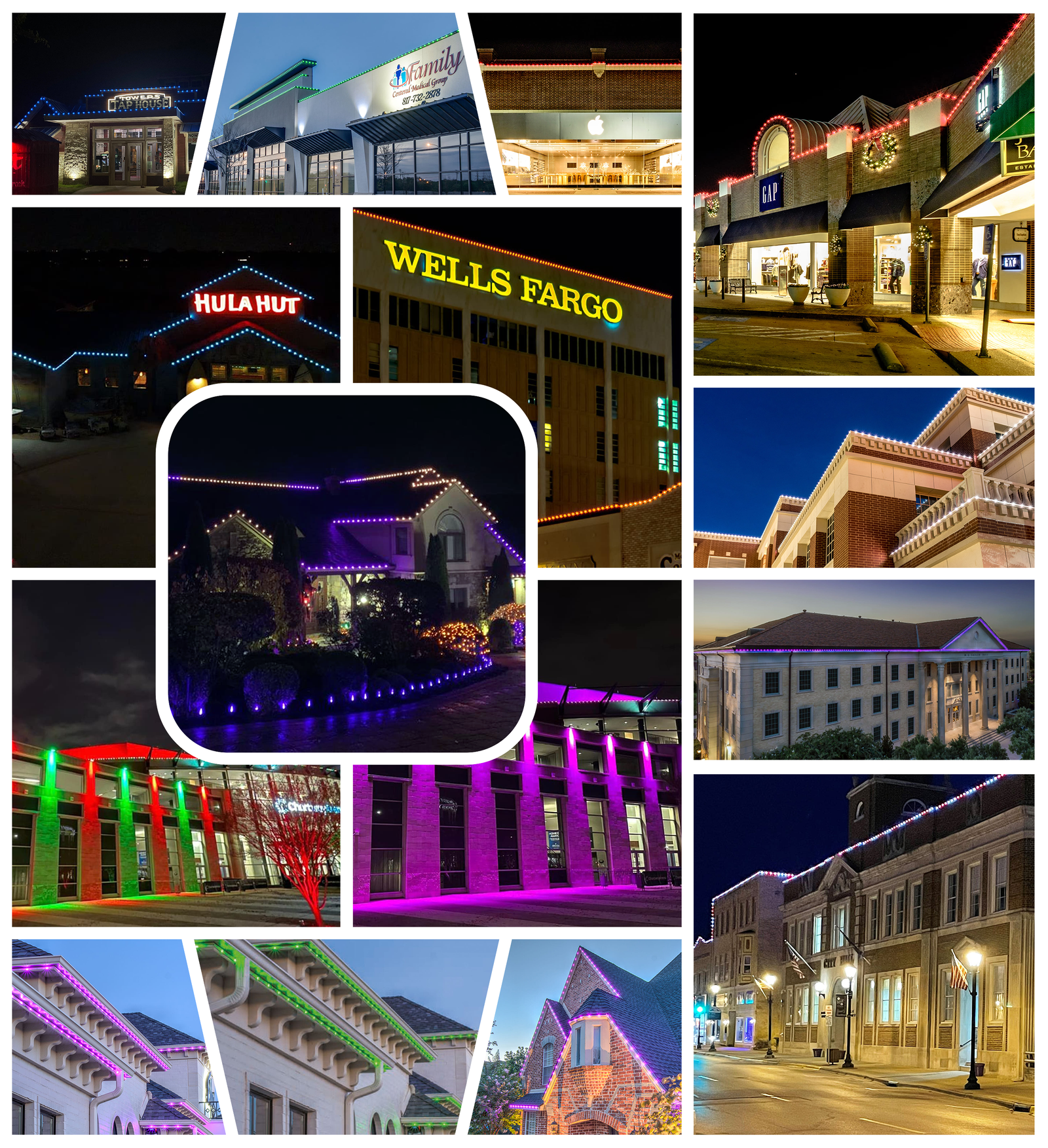Outdoor lighting automation has reached new heights with the integration of edge computing and artificial intelligence (AI) in LED lighting devices. By harnessing the power of edge computing and AI, stakeholders can optimize performance, reduce energy consumption, and enhance user experiences. We will also highlight the pivotal role of these advancements in improving communication between lighting devices and the central system, empowering data-driven decision making in outdoor lighting automation.
How is Edge Computing and Artificial Intelligence Transforming Outdoor Lighting?
Localized Data Processing
 Edge computing brings computing power closer to the source of data generation, allowing LED lighting devices to process data locally. This reduces latency and minimizes reliance on cloud-based systems for decision making. With AI algorithms embedded within the devices, real-time data from sensors and local analytics enable immediate responses and adjustments, improving overall system performance.
Edge computing brings computing power closer to the source of data generation, allowing LED lighting devices to process data locally. This reduces latency and minimizes reliance on cloud-based systems for decision making. With AI algorithms embedded within the devices, real-time data from sensors and local analytics enable immediate responses and adjustments, improving overall system performance.
Intelligent Decision Making
AI algorithms integrated into LED lighting devices enable them to make intelligent decisions based on analyzed data. By continuously monitoring environmental factors, occupancy patterns, and user preferences, AI-enabled devices can dynamically adjust lighting levels, colors, and timing. This adaptive lighting approach optimizes energy consumption and enhances user experiences, all while reducing the dependency on external commands.
Enhanced Communication with the Gateway
Edge computing, combined with AI, facilitates seamless communication between LED lighting devices and the central system, often referred to as the gateway. These intelligent devices can transmit relevant data and receive instructions from the gateway, enabling coordinated actions and centralized control. This two-way communication allows for real-time adjustments, remote monitoring, and efficient management of the entire lighting network.
Some Use Cases Of Edge Computing and AI-Enabled Outdoor Lighting Systems
Here are some specific examples of how edge computing and AI-enabled lighting automation are transforming residential, commercial, and municipal lighting:
Residential Lighting
 Smart Home Lighting: Edge computing and AI enable smart lighting systems in residential outdoor lighting. Residents can use voice commands or smartphone apps to control the lighting, adjusting brightness, color, and scheduling based on their preferences. AI algorithms learn user behavior over time and automatically adjust lighting to create personalized and energy-efficient environments.
Smart Home Lighting: Edge computing and AI enable smart lighting systems in residential outdoor lighting. Residents can use voice commands or smartphone apps to control the lighting, adjusting brightness, color, and scheduling based on their preferences. AI algorithms learn user behavior over time and automatically adjust lighting to create personalized and energy-efficient environments.
Commercial Lighting
 Occupancy-based Lighting: AI-enabled lighting systems in commercial outdoor lighting utilize edge computing to detect occupancy and adjust lighting accordingly. By analyzing real-time data from occupancy sensors, the lighting system can activate or dim lights in specific areas as per occupancy levels, optimizing energy consumption and reducing costs.
Occupancy-based Lighting: AI-enabled lighting systems in commercial outdoor lighting utilize edge computing to detect occupancy and adjust lighting accordingly. By analyzing real-time data from occupancy sensors, the lighting system can activate or dim lights in specific areas as per occupancy levels, optimizing energy consumption and reducing costs.
Daylight Harvesting: Edge computing and AI algorithms can analyze data from light sensors and adjust artificial lighting levels to complement natural light in commercial spaces. This ensures that optimal lighting levels are maintained while minimizing energy usage during daylight hours.
Municipal Lighting
 Smart Street Lighting: Edge computing and AI are transforming municipal lighting systems. Smart streetlights equipped with AI algorithms can adjust brightness based on real-time data, such as ambient light levels and pedestrian or vehicle activity. This improves energy efficiency, reduces light pollution, and enhances safety in urban areas.
Smart Street Lighting: Edge computing and AI are transforming municipal lighting systems. Smart streetlights equipped with AI algorithms can adjust brightness based on real-time data, such as ambient light levels and pedestrian or vehicle activity. This improves energy efficiency, reduces light pollution, and enhances safety in urban areas.
Predictive Maintenance: AI algorithms integrated into municipal lighting systems can use edge computing to monitor the performance of streetlights and detect potential faults or maintenance needs. By analyzing data from built-in sensors, the system can proactively identify faulty lights, reducing response times and improving maintenance efficiency.
Benefits of Edge Computing and AI in Outdoor Lighting
The integration of edge computing and AI in outdoor lighting automation offers several significant benefits:
 Real-time Responsiveness
Real-time Responsiveness
By processing data locally and making decisions at the edge, AI-enabled LED lighting devices can respond in real-time to changing environmental conditions, occupancy patterns, and user preferences. This enhances user satisfaction, safety, and security while minimizing energy wastage.
Reduced Reliance on Cloud Connectivity
Edge computing reduces the dependence on cloud-based systems for decision making in outdoor lighting automation. Localized data processing and AI algorithms allow lighting devices to function autonomously, even in situations where cloud connectivity may be limited or intermittent. This ensures continuous lighting performance and minimizes disruptions.
Energy Efficiency
AI-enabled LED lighting devices, with their ability to make intelligent decisions based on real-time data, optimize energy consumption. By dynamically adjusting lighting levels and timing, energy wastage is minimized while maintaining optimal lighting conditions. This results in substantial cost savings and reduced environmental impact.
Enhanced Scalability and Flexibility
Edge computing and AI enable scalability and flexibility in outdoor lighting systems. LED lighting devices can function autonomously, with localized decision-making capabilities, reducing the need for complex centralized control infrastructure. This allows for easy expansion, customization, and adaptation to varying lighting requirements in different outdoor environments.
Proactive Maintenance and Fault Detection
AI-enabled lighting devices can use edge computing to monitor their own performance and detect potential faults or maintenance needs. By analyzing data from built-in sensors and comparing it with predefined performance thresholds, the devices can identify anomalies and proactively alert the maintenance team. This predictive maintenance approach reduces downtime and enhances the longevity of lighting fixtures.
Conclusion
Edge computing and AI have revolutionized outdoor lighting automation, enabling AI-enabled LED lighting devices to make informed decisions locally and communicate with the gateway for coordinated actions. Real-time responsiveness, reduced reliance on cloud connectivity, energy efficiency, scalability, and flexibility are among the significant benefits offered by these advancements. The seamless communication between LED lighting devices and the gateway empowers data-driven decision making, enhancing overall system performance, user experiences, and sustainability. As edge computing and AI continue to evolve, their integration into outdoor lighting automation will pave the way for a brighter, more efficient, and connected future.


 Real-time Responsiveness
Real-time Responsiveness






